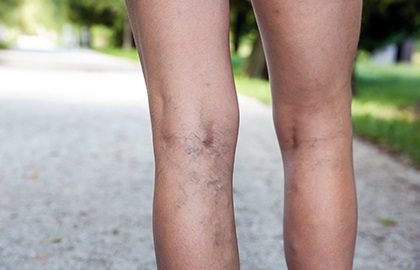Does Varicose Cream Actually Work?

According to the National Institutes of Health, by age 50 some 20% of men and 40% of women will have some significant form of leg vein disorder. Varicose veins usually occur when valves made to keep blood in the legs from running backwards, fail.
This results in a lack of upward pressure, which pools blood down in the lower legs. The excess blood can make the legs feel heavy and difficult to move. Fluid seepage from the veins can cause rashes or even ulcers.
The pooled blood can cause pain or throbbing at night when lying prone. Once thought to be only a cosmetic problem, varicose veins may indicate deeper problems with the heart, vascular, and/or circulatory system.
There are creams or ointments that may provide a bit of temporary pain relief, and improve the appearances of the veins temporarily, but these treat the symptoms, not the underlying causes of varicose veins. They do not solve the underlying problem.
Causes and Triggers
Genetics, or heredity, almost certainly plays a role in the occurrence of varicose veins. Certain times and events in life, such as puberty, pregnancy, and menopause, when strain and change are placed upon the body, seem to trigger them.
Long periods of standing can aggravate vein conditions. Aging, lack of activity, and obesity may be contributing factors.
A Vein Clinic Assessment
The good news is that there are now rapid and relatively painless procedures to rid yourself of varicose and spider veins. In Sclerotherapy, one minimally invasive procedure, an injected solution reroutes blood to healthier veins.
Vein ablation uses radio frequency to completely remove spider or varicose veins, in as little as an hour, with almost no pain. These possible surgical solutions may be only part of a comprehensive treatment plan.
An assessment by a reputable, knowledgeable specialist at an established vein clinic treatment center can help you find the best way to solve varicose vein problems.








